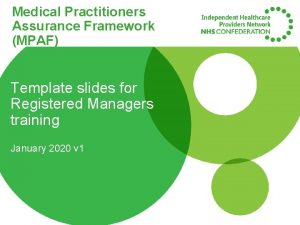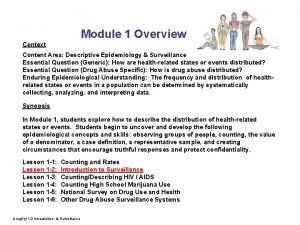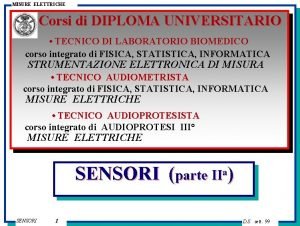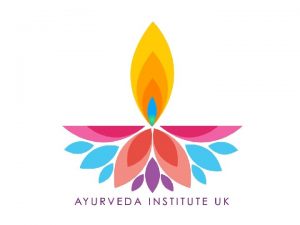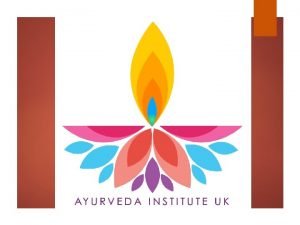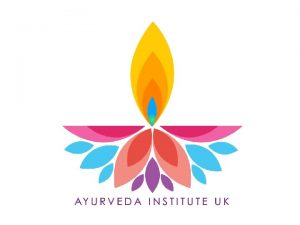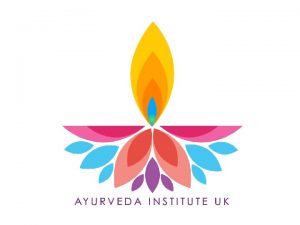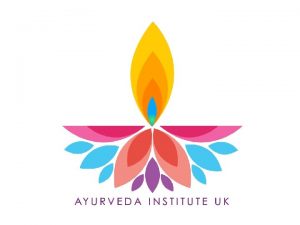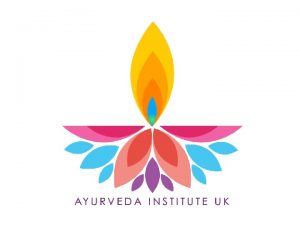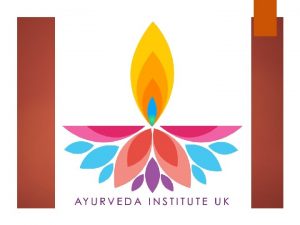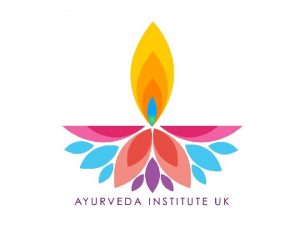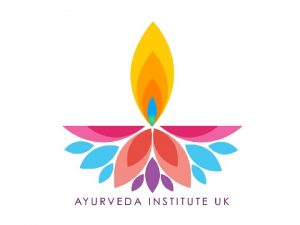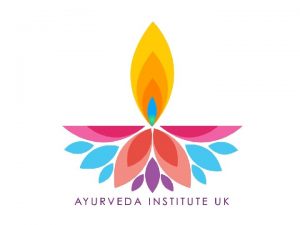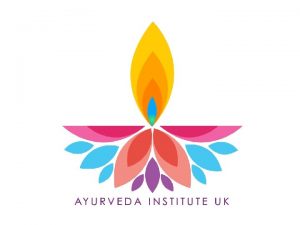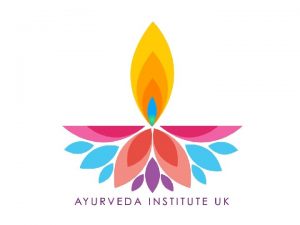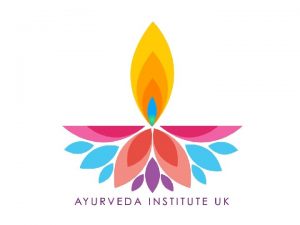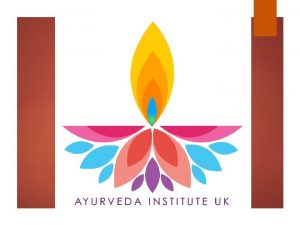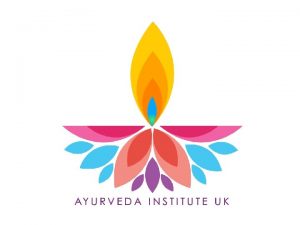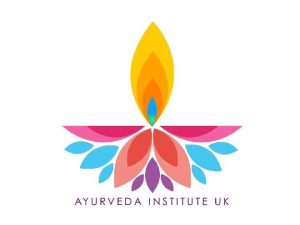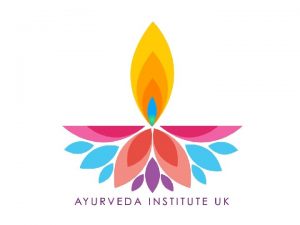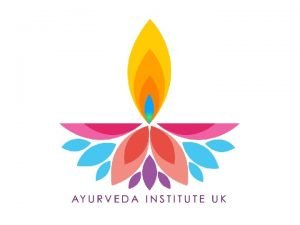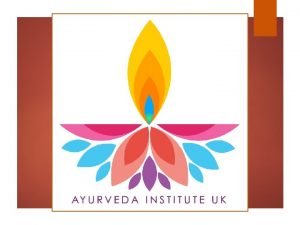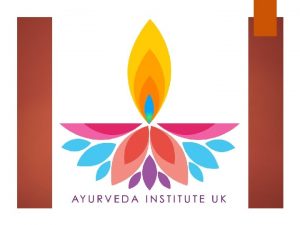DIPLOMA Ayurvedic Practitioners Course Module 5 2 nd































































- Slides: 63


DIPLOMA Ayurvedic Practitioners Course Module 5 2 nd & 3 rd March 2019 2

Yoni Roga & Sukra dosha (Infertility & gynaecological disorders)

Yoni Roga & Sukra dosha (Infertility & gynaecological disorders) The Allopathic perspective Infertility • When a couple can't conceive despite having regular unprotected sex. • Affects 1 in 7 couples • 84% of couples conceive naturally within a year if they have regular unprotected sex (every 2 or 3 days). • After 3 years, likelihood of natural conception within the next year is 25% or less

Infertility 2 types of infertility: • primary infertility – someone who's never conceived in the past • secondary infertility – someone has had 1 or more pregnancies in the past

Treating infertility • medical treatment – for lack of regular ovulation • surgical procedures – treatment for endometriosis, repair of the fallopian tubes, or removal of scarring (adhesions) within the womb • assisted conception – intrauterine insemination (IUI) or in vitro fertilisation (IVF)

Treating infertility Treatments for infertility can cause complications: • multiple pregnancy – if more than 1 embryo is placed in the womb in IVF – increased chance of twins – significantly increases the risk of complications for mother and children • ectopic pregnancy – the risk of having an ectopic pregnancy is slightly increased in IVF

Infertility Causes: In 25% of cases it isn't possible to identify the cause. Women: • lack of regular ovulation, the monthly release of an egg • blocked or damaged fallopian tubes • endometriosis - where the lining of the womb (the endometrium) is found outside the womb Men • most common cause is poor-quality semen Risk factors • age – female fertility decline with age, biggest decrease in fertility begins during the mid-30 s • weight – being overweight or obese (having a BMI of 30 or over) or severely underweight • sexually transmitted infections (STIs) – STIs, including chlamydia • smoking – including passive smoking • alcohol – safest approach is not to drink alcohol at all (the chief medical officers for the UK recommend men and women should drink no more than 14 units of alcohol a week, which should be spread evenly over 3 days or more) • environmental factors – exposure to certain pesticides, solvents and metals • stress – can affect relationships and cause a loss of sex drive; affect ovulation and sperm production

Infertility in women Ovulation problems can be a result of: • poly cystic ovary syndrome (PCOS) • thyroid problems – both an overactive thyroid gland an underactive thyroid gland can prevent ovulation • premature ovarian failure – where a woman's ovaries stop working before the age of 40 • Scarring from surgery - can damage and scar the fallopian tubes or cervix • Cervical mucus problems - mucus in cervix fails to become thinner to allow sperm through • Fibroids - Non-cancerous growths in or around the womb can prevent a fertilised egg attaching itself to the womb, or block a fallopian tube

Infertility • Endometriosis - small pieces of the womb lining (the endometrium) grow in other places, such as the ovaries and damage the fallopian tubes • Pelvic inflammatory disease (PID) - infection of the upper female genital tract, often caused by an STI leading to scarring of fallopian tubes so egg cannot travel to the womb • Sterilisation - blocking the fallopian tubes to make it impossible for an egg to travel to the womb - rarely reversible • Medicines and drugs - side effects of some types of medicines and drugs: – non-steroidal anti-inflammatory drugs (NSAIDs) – long-term use or a high dosage – chemotherapy – can sometimes cause ovarian failure – neuroleptic medicines – antipsychotic medicines – spironolactone – a type of medicine used to treat fluid retention(oedema) – Illegal drugs, such as marijuana and cocaine

Infertility in men • lack of sperm –very low sperm count or no sperm • sperm that aren't moving properly – harder for sperm to swim to the egg • abnormal sperm – abnormal shape - harder for them to move • Testicles – damage to testicles can affect sperm – – – an infection of testicles testicular cancer testicular surgery a congenital defect one or both testicles hasn't descended into the scrotum injury to testicles

Infertility in men • • • Sterilisation - vasectomy involves cutting and sealing off the tubes that carry sperm out of testicles – reversible but not guaranteed to work Ejaculation disorders - difficult to release semen during sex Hypogonadism - abnormally low level of testosterone - could be caused by – Tumour – taking illegal drugs – Klinefelter syndrome - rare syndrome where a man is born with an extra female chromosome • • • Medicines and drugs sulfasalazine – an anti-inflammatory medicine used to treat conditions such as Chron’s disease and rheumatoid arthritis anabolic steroids – are often used illegally to build muscle and improve athletic performance chemotherapy – can sometimes severely reduce sperm production herbal remedies – eg. root extracts of the Chinese herb Tripterygium wilfordii, can affect the production of sperm Illegal drugs - such as marijuana and cocaine

Fertility tests for women • Blood tests – for progesterone level to check whether you're ovulating • Chlamydia test - an STI that can affect fertility • Ultrasound scan - can be used to check ovaries, womb and fallopian tubes for conditions such as endometriosis and fibroids, blocked fallopian tubes • X-ray – of womb and fallopian tubes to detect blockages in your fallopian tubes • Laparoscopy - keyhole surgery - involves making a small cut in lower tummy so a thin tube with a camera at the end can be inserted to examine your womb, fallopian tubes and ovaries

Fertility tests for men • Semen analysis - to check for sperm problems • Chlamydia test – urine test

Treating infertility Treatment • Medicines: • clomifene – encourages the monthly release of an egg (ovulation) • tamoxifen – an alternative to clomifene • metformin – for PCOS • gonadotrophins – stimulates ovulation in women, improve fertility in men • gonadotrophin-releasing hormone & dopamine agonists – to encourage ovulation

Treating infertility • Surgical procedures: • Fallopian tube surgery - to break up the scar tissue in the fallopian tubes, making it easier for eggs to pass along them • Endometriosis, fibroids and PCOS – Laparoscopic surgery for endometriosis to destroy or remove fluid-filled sacs called cysts or to remove submucosal fibroids – For PCOS, a minor surgical procedure called laparoscopic ovarian drilling (using heat or laser to destroy part of the ovary • Correcting an epididymal blockage and surgery to retrieve sperm – epididymis is a coil-like structure in the testicles that helps store and transport sperm - surgery can be used to correct a blockage there • Surgical extraction of sperm – For obstruction that prevents the release of sperm – Absence of tube that drains the sperm from the testicle (vas deferens) – After vasectomy

Assisted conception • Intrauterine insemination (IUI) – – • In vitro fertilisation (IVF) – – • the egg is fertilised outside the body the woman takes fertility medication to encourage ovaries to produce more eggs Eggs are removed from the ovaries and fertilised with sperm in a laboratory Fertilised egg called an embryo is returned to the woman's womb Egg and sperm donation – – – • artificial insemination involves inserting sperm into the womb via a fine plastic tube passed through the cervix Treatment with donor eggs is usually carried out using IVF Anyone who registered to donate eggs or sperm after April 1 2005 can no longer remain anonymous child born is legally entitled to find out the identity of the donor when they become an adult (at age 18) Complementary therapy – There's no evidence to suggest complementary therapies for fertility problems are effective.

Yoni Roga & Sukra dosha (Infertility & gynaecological disorders) The Ayurvedic perspective Yoni Roga • Considerable focus on infertility and gynaecological disorders • ‘Yoni Roga’ = vaginal or reproductive disorders in women • ‘Yoni’ = the womb or place of birth for every living or non-living being • Charaka Samhita: – “sthree yoni” = the creator of humanity – Humans should know how to respect and keep that area free of disorders

Yoni Roga 20 Yoni Roga are identified: • • Vata – 5 Pitta – 5 Kapha – 5 Tridosha – 5 • The vagina and womb are situated in the apana vata area. • All Yoni Roga due to vitiated vata even though the involvement of other dosha is recognised

Yoni Roga Nidhana • • • • • Incompatible foods Intake of excessive alcohol (or different types of alcohol consumed together) Eating before previous meal digested Indigestion Consuming raw food or food that is hard to digest Terminations or abortions Excessive sex Excessive libido / craving for sex all the time Horse or camel riding Cart riding Long distance walking Extreme sadness / worrying Excessive fasting Excessive weight loss Weight lifting Accidents / abuse to the area Daytime sleeping

Yoni Roga Samprapti Association with causative factors Contamination / obstruction of Arthavavaha srotas (Sroto avarodha) Imbalance of apana vata Yoni Roga (gynaecological disorders)

Yoni Roga Examples: – menstrual disorder – infertility – Endometriosis – Fibroids – PCOS (Beeja dosha – ovary / eggs)


Endometriosis

Polycystic ovary

Vata Yoni Roga & Sukra dosha • Causes – Obstruction of vata in the apana vata area which affects vata function. Signs / symptoms – – – Pain and pressure Pins and needles Sensitivity Rough / dryness Loss of sensation (difficult to achieve orgasm) Menstrual blood (thin / frothy / vaginal popping sounds) and painful

Pitta Yoni Roga • Causes – Vata + pitta causes (katu, amla, lavana) • Signs / symptoms – – – Burning sensation Like fever / flu Excessive sweating Fishy smell / bad odour Vaginal discharge / yellow / slimy Menstrual blood dark red / blackish / clots

Kapha Yoni Roga • Causes – Vata + kapha prominent diet / lifestyle – Daytime sleep / oily food • Signs / symptoms – – – Phlegm like vaginal secretions Lots of white odourless discharge Mucus in menstrual blood Itchiness Light colour menstrual blood and only a little amount Little pain or pain less

Vataja Yoni Roga– Madhava Nidhana • Udavarta – painful / frothy menstruation (dysmenorroea) • Vandhya and vipluta – absence of menstruation (amenorrhoea). In vipluta pain is constantly present (vaginismus) • Paripluta – severe pain during coitus (dyspareunia) • Vatala – vagina is rough and stiff with spasmodic and pricking pain (dryness of vagina - hypoestrogenaemia)

Pittaja Yoni Roga – Madhava Nidhana • Lohitaksaya – excessive loss of menstrual blood with burning sensation (menorrhagia and metrorrhagia) • Vamini – failure to fertilise the ovum (natural killer cells / NK cells). Bija (sperms) and raja (ovum) are expelled with vayu • Prasramsini – prolapse of uterus due to straining (raised intra-abdominal pressure) making conception difficult • Putraghni – habitual abortion where product of conception repeatedly aborted due to bleeding • Pittala – severe burning sensation and formation of pus with fever

Kaphaja Yoni Roga – Madhava Nidhana • Atyananda – unable to be satisfied with any amount of sexual intercourse (sexual insatiability) • Karnini – nodular swelling formed in genital organs due to vitiation of slesma and rakta • Acarana – inability to retain the male seed due to early discharge of the woman • Aticarana – inability to retain the male seed due to desire for longer sexual intercourse • Slesmala – vaginal canal is unctuous, itchy and excessively cold (vaginitis)

Tridosha Yoni Roga – Madhava Nidhana • Sandi – amenorrhoea (absence of menstruation), amazia (absence of mammary glands and vagina feels rough during coitus • Andali – disease created by adolescent girl having sexual intercourse with a man with an excessively big penis • Mahayoni – big and wide vagina • Sucivaktra – vagina is excessively constricted and narrow • Sannipataja – features due to vitiation of all the doshas are present

Yoni roga - Chikitsa • All Yoni Roga due to predominantly vata imbalance • Yoni, ovary, all associated organs are housed in pelvic area, governed by apana vata • Balancing vata is the main goal of the treatment • Secondary focus is pitta or kapha imbalance which may cause obstruction in arthavavaha srotas • Thirdly all sexual and gynaecological organs lie on the second chakra in which the water element is prominent (buta). Hence, this area needs frequent rejuvenation and nutrition and water to this area have to be enhanced.

Yoni roga - Chikitsa Aims of the treatment: • Vata = (balancing) • Pitta (reducing) • Kapha (increasing) • Reduce or cut down vata and pitta aggravating diet and lifestyle • Introduce moisture and oleation and nourishment to the area

Yoni roga - Chikitsa Treatments • Sneha • Sweda • Vasthi • Sheeta karma

Yoni roga - Chikitsa Powders • Apana vata balancing: – Triphala powder + Dhatri + Pipili choorna and honey • Agni deepana to balance pitta: – Hinguwastaka – Amahara – Paaka choorna • To reduce pitta: – – – Chandana (sandalwood powder) Nimbadi (neem) Bu nimbha (Andrographis peniculata) Manjistha choorna Pushyanaga choorna

Yoni roga - Chikitsa Vrnghana • Shatawari choorna • Ashwagandha choorna Tablets • Triphala • Ashwagandha • Shatawari • Pittahara Coriander sheeta kashaya – cold infusion • Coriander + coconut water

Yoni roga - Chikitsa Alepa – application of medicinal pastes • Triphala with warm water applied to vaginal area • Sandalwood / manjistha applied to vaginal area • Mahanarayana oil / pinder oil applied to vaginal area Avagahana – vaginal bath • Pancha valkala kashaya • Manjistha water • Sandalwood red / white decoction • Milk + triphala decoction Oil tampon • Neelyadee oil • Bala sheradhe oil

Yoni roga - Chikitsa Tonics • Dashamoola arista • Ashoka arista • Shatawari gopakanyadi • Ashwagandha arista Nutritive jam • Soma jam • Surya jam • Chayawanaprash

Sukra dosha (male infertility) Nidhana • • Excessive exercise Excessive sexual indulgences Incompatible food / lifestyle Excessive intercourse Asexual (avoiding sex) Excessive consumption of salt / sour / astringent Excessive consumption of hot food / pungent food

Sukra dosha (male infertility) Nidhana • • • Being with women with low libido Excessive ejaculation Jara (emaciation) Excessive sadness / worries Excessive exposure to heat Accident to pelvic / genital area Fever / tiredness Excessive anger / suspicion Excessive diarrhoea Suppression of natural urges

Sukra dosha (male infertility) Samprapti • After association with the causative factors, rasa dhatu becomes vitiated. • Rasa dhatu is responsible for preenana (satisfaction to the body) and as it the first dhatu, once vitiated all steps below are malnourished as a result (rasa, rakta, mansa, medas, asthi, majja, sukra). • Hence there are two ways in which the sukra dhatu can become imbalanced: – Inadequate nutrition to the sukra dhatu produces malnourished sukra – Preenana (satisfaction) is obstructed even where there are nourished sperms. Without a signal of sensual satisfaction to the brain either sperms are not produced or not released. As a result sukra dosha can appear (psychological factors).

Sukra dosha (male infertility) Love is explained in different capacities: • Sneha = mothers love • Kama = sexual love • Raga = attachment love • Prema = universal love If one has prema, he is capable of the other three naturally

Sukra dosha (male infertility) Chikitsa Avoid: • Drinking lots of water • Incompatible foods • Heavy carbohydrate • Heavy food • Acidic food • Red meat / yoghurt • Greed for processed food like blue cheese

Sukra dosha (male infertility) Treatment Main aims of treatment are: • Srotas shodana (Panchakarma is the best treatment) • Rejuvenation

Sukra dosha (male infertility) • Oleation (snehana / abyanga) – apply oil and massage pelvic and penis area – Mahanarayana oil – Ashwagandha oil – Bala oil • Shodana – Purgative (if patient is not emaciated) – Vasti (enema) – Anuvasana vasti decoction with rejuvenate herbs like Ashwagandha bala • Agni deepana – Hinguwastaka (aphrodisiac)

Sukra dosha (male infertility) • Rasayana – Shatawari choorna – Ashwagandha rasayana – Chayawanaprash • Arista – Dashamoolarista – Bala arista – Ashwagandha arista

Arbuda (Cancer)

Arbuda (Cancer) The Allopathic perspective • Cancer development: – cells in a specific part of the body grow and reproduce uncontrollably – cancerous cells can invade and destroy surrounding healthy tissue, including organs – cancer sometimes begins in one part of the body and spreads to other areas (metastasis) • more than one in three people will develop some form of cancer during their lifetime • In the UK, the four most common types of cancer are: – – breast cancer lung cancer prostate cancer bowel cancer • There are more than 200 different types of cancer, and each is diagnosed and treated in a particular way

Arbuda (Cancer) The Allopathic perspective Breast cancer • most common type of cancer in the UK • most diagnosed are over 50 • one in eight women are diagnosed with breast cancer during their lifetime • good chance of recovery if detected early • women advised to check their breasts regularly for changes

Arbuda (Cancer) The Allopathic perspective Symptoms of breast cancer • a lump or area of thickened breast tissue • change in the size or shape of one or both breasts • discharge from either of your nipples, which may be streaked with blood • a lump or swelling in either of your armpits • dimpling on the skin of your breasts • a rash on or around your nipple • a change in the appearance of your nipple, such as becoming sunken into your breast

Arbuda (Cancer) The Allopathic perspective Lung cancer • one of the most common and serious types of cancer • 44, 500 people are diagnosed with the condition every year in the UK • Signs and symptoms: – – – usually no signs or symptoms in the early stages a persistent coughing up blood persistent breathlessness unexplained tiredness and weight loss an ache or pain when breathing or coughing

Arbuda (Cancer) The Allopathic perspective Types of lung cancer • primary lung cancer = begins in the lungs • Secondary lung cancer = cancer that spreads to the lungs from another place in the body • 2 main types of primary lung cancer: – non-small-cell lung cancer – the most common type, accounting for more than 80% of cases; can be either squamous cell carcinoma, adenocarcinoma or largecell carcinoma – small-cell lung cancer – a less common type that usually spreads faster than non-small-cell lung cancer

Arbuda (Cancer) The Allopathic perspective Who's affected • most commonly diagnosed in people aged 70 -74 • smoking is the main cause (accounting for over 85% of cases) Treating lung cancer • Treatment depends on – – – • • • type of cancer how far it's spread general health of patient Early diagnosis & cells confined to small area – surgery to remove affected area If surgery unsuitable due to general health - radiotherapy to destroy the cancerous cells If the cancer has spread too far – chemotherapy Outlook • Symptoms go unnoticed until cancer has spread • Hence outlook for the condition isn't as good as many other types of cancer • 1 in 3 people with the condition live for at least a year after diagnosis • 1 in 20 people live at least 10 years after diagnosis

Arbuda (Cancer) The Allopathic perspective Prostate cancer • most common cancer in men in the UK • 40, 000 new cases diagnosed every year • develops slowly, so there may be no signs for many years • symptoms often only become apparent when prostate is enlarged causing: – increased need to urinate – straining while urinating – feeling that bladder has not fully emptied What is the prostate? • small gland in the pelvis found only in men • size of a satsuma • located between the penis and the bladder and surrounds the urethra • main function is to help in the production of semen

Arbuda (Cancer) The Allopathic perspective Causes • Causes largely unknown • most cases develop in men aged 50 or older • more common in men of African-Caribbean or African descent, and less common in men of Asian descent Tests for prostate cancer • no single test for prostate cancer • most commonly used: – blood tests – physical examination of prostate (known as a digital rectal examination or DRE) – biopsy • blood test, known as a prostate-specific antigen (PSA) test, measures the level of PSA and may help detect early prostate cancer

Arbuda (Cancer) The Allopathic perspective Treatment • For many treatment is not immediately necessary • At an early stage and not causing symptoms - policy of "watchful waiting" • surgically removing the prostate • radiotherapy • hormone therapy • At a later stage when the cancer has spread to other parts of the body, typically the bones, it cannot be cured • All treatment options carry the risk of significant side effects – erectile dysfunction – urinary incontinence – Newer treatments, such as high-intensity focused ultrasound (HIFU) or cryotherapy, aim to reduce these side effects

Arbuda (Cancer) The Allopathic perspective Bowel cancer • general term for cancer that begins in the large bowel • depending on where the cancer starts, bowel cancer is sometimes called colon or rectal cancer • one of the most common types of cancer diagnosed in the UK • most people diagnosed with it are over the age of 60 Symptoms of bowel cancer • persistent blood in the stools – that occurs for no obvious reason or is associated with a change in bowel habit • a persistent change in your bowel habit – which usually means going more often, with looser stools • persistent lower abdominal (tummy) pain, bloating or discomfort – that's always caused by eating and may be associated with loss of appetite or significant unintentional weight loss

Arbuda (Cancer) The Allopathic perspective Tests • simple examination of stomach and bottom for lumps • simple blood test to check for iron deficiency / anaemia – this can indicate whethere's any bleeding from your bowel Causes of bowel cancer • Causes unknown • Risk factors: – age – almost 9 in 10 cases of bowel cancer occur in people aged 60 or over – diet – a diet high in red or processed meats and low in fibre can increase your risk – weight – bowel cancer is more common in people who are overweight or obese – exercise – being inactive increases your risk of getting bowel cancer – alcohol and smoking – a high alcohol intake and smoking – family history – having a close relative (mother or father, brother or sister – Other disorders - extensive ulcerative colitis or Crohn's disease in the colon for more than 10 years

Arbuda (Cancer) The Ayurvedic perspective • ‘Arbuda’ = tumour (closely related to cancer) • Arbuda = in Sanskrit means “millions of” – giving indication of causes • It can refer to: – millions of roots – millions of worries – millions of problems

Arbuda (Cancer) The Ayurvedic perspective • Cancer occurs due to: – lack of Ojas (immunity) or – the function of Ojas is arrested by the pitta / tejas • This tejas is a corrupted form • can be contaminated by any activity that increases pitta • particularly by psychological factors

Arbuda (Cancer) The Ayurvedic perspective Rasa Rakta Mansa Medas Asthi Majja Sukra OJAS

Arbuda (Cancer) The Ayurvedic perspective • Ojas = immunity made by the superior nourishment and the final product of the dhatu • Ojas has the nature of kapha • Ojas is produced by: – kapha food (alkaline food) & – positive emotions of kapha (sattwa quality) eg. Prema (universal love), compassion, kindness
 Diploma in modern dietetics and ayurvedic nutrition
Diploma in modern dietetics and ayurvedic nutrition Manjushree ayurved college
Manjushree ayurved college Ayurvedic theory
Ayurvedic theory Bsb51407
Bsb51407 What is a theatre practitioner
What is a theatre practitioner Kimber dita for practitioners volume 1 download
Kimber dita for practitioners volume 1 download Australian college of nurse practitioners
Australian college of nurse practitioners Social business practitioners
Social business practitioners Progress report for ecd
Progress report for ecd Tax practitioners association indore
Tax practitioners association indore National association of patent practitioners
National association of patent practitioners Software engineering a practitioners approach
Software engineering a practitioners approach Curbside management practitioners guide
Curbside management practitioners guide Assurance framework template
Assurance framework template Association of independent insolvency practitioners
Association of independent insolvency practitioners Unregistered health practitioners
Unregistered health practitioners C device module module 1
C device module module 1 Course module sample
Course module sample Safety leadership for supervisors
Safety leadership for supervisors T junction brick wall
T junction brick wall Course number and title
Course number and title Course interne course externe
Course interne course externe Nostrification of high school diploma
Nostrification of high school diploma Diploma al super papa
Diploma al super papa Grade 9 diploma
Grade 9 diploma Grand canyon diploma
Grand canyon diploma Cache level 3 diploma in childcare and education
Cache level 3 diploma in childcare and education Bths naviance
Bths naviance Ia resp diploma
Ia resp diploma Diploma in reproductive medicine
Diploma in reproductive medicine Diploma sejarah & tamadun islam
Diploma sejarah & tamadun islam Fsrh diploma cost
Fsrh diploma cost Ncrq hsd2 assignment 1
Ncrq hsd2 assignment 1 International skills diploma seal presentation
International skills diploma seal presentation Diploma quran dan sunnah
Diploma quran dan sunnah Ocr level 6 diploma in career guidance and development
Ocr level 6 diploma in career guidance and development Ia diploma resp
Ia diploma resp Halimbawa ng talasanggunian
Halimbawa ng talasanggunian Orvosi diploma honositasa magyarorszagon
Orvosi diploma honositasa magyarorszagon Ilgi eki nedir
Ilgi eki nedir Diploma fin de curso infantil
Diploma fin de curso infantil Btec level 3 extended diploma in performing arts
Btec level 3 extended diploma in performing arts Almanya diploma denklik danışmanlık
Almanya diploma denklik danışmanlık Grade 10 orientation
Grade 10 orientation Diploma in statistics
Diploma in statistics Lausd persistence award
Lausd persistence award Baccalaureate diploma
Baccalaureate diploma Online culinology degree
Online culinology degree Diploma in funeral arranging and administration
Diploma in funeral arranging and administration Ap international diploma
Ap international diploma Softuni jobs
Softuni jobs Pwcs specialty programs
Pwcs specialty programs Active english book diploma sem 1
Active english book diploma sem 1 Diploma quran dan sunnah
Diploma quran dan sunnah Diploma al quran dan sunnah
Diploma al quran dan sunnah The honesty diploma
The honesty diploma Ibd diploma in brewing
Ibd diploma in brewing Libertas per sapientiam
Libertas per sapientiam Partial ib
Partial ib Diploma after 10th
Diploma after 10th Misure diploma
Misure diploma Se otorga el presente reconocimiento
Se otorga el presente reconocimiento Diploma de estudios avanzados dea
Diploma de estudios avanzados dea Dea diploma de estudios avanzados
Dea diploma de estudios avanzados













